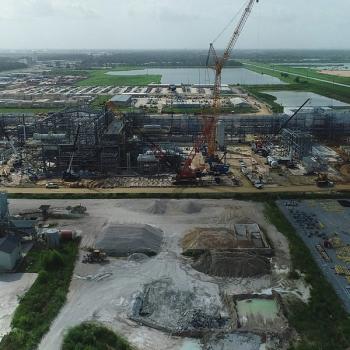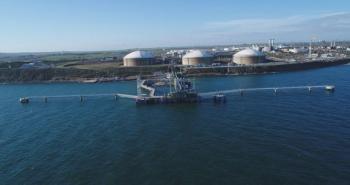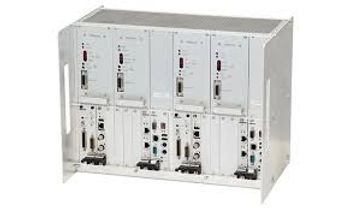
Industrial Internet
GE SUMMIT AIMS TO MAKE THE INDUSTRIAL INTERNET REAL — NO UNPLANNED DOWNTIME IS THE IMMEDIATE GOAL FOR TURBOMACHINERY
General Electric held its first Intelligent Platforms User Summit in Orlando, Florida in late October. It gathered together users and industry leaders to discuss the implications of the Industrial Internet.
“If you went to bed last night as an industrial company, you are going to wake up in the morning as a software and analytics company,” said Jeff Immelt, GE’s Chairman and CEO. “It’s all about using sensors and controls to get real-time data. Who uses that data best is going to increasingly determine who succeeds.”
The GE leader laid out the focus for his company that will have a major impact on the turbomachinery sector. The first priority is investing in the gas-energy transition. GE, he said, would be investing in natural gas, particularly in North America. The second focus is advanced manufacturing. The company has become heavily involved in new automation tools such as 3D printing, and additive manufacturing to streamline the manufacturing process and speed time to market. The third priority is the Industrial Internet.
“Nothing is more important than this,” said Immelt. “We have been working on the Industrial Internet now for five years.” He believes the nature of technology is changing due to the combination of material science advances and analytics. For the oil & gas field, he said, no unplanned downtime is the best way to communicate the advantages of the Industrial Internet.
Smarter machinery
This does not mean that the machinery becomes less important. Rather, machinery is made smarter by enabling technologies that sit between the machine and the intelligence. Sensors, service robots, and better means of connectivity make it possible to add analytics to turbomachinery operations.
Where you see the most tangible evidence of all this is in GE Predictivity products as part of its Intelligent Platforms portfolio. The company has already launched over 40 of these to date. They deal with areas, such as security, data management, remote monitoring, diagnostics, asset lifecycle management and predictive maintenance.
For LM6000 aeroderivatives, for example, Predictivity is said to optimize performance, improve uptime and efficiency and reduce lifecycle costs. The software organizes the data output of each aeroderivative gas turbine, including maintenance and operational data, to assist in decision-making. In addition, it can increase the flexibility of an LM6000, and boost incremental power from 1-to-5 MW, and cut full-load startup time by as much as half.
Jeff Immelt[/caption]
“If you can generate a 1% fuel efficiency improvement — that equates to $3 billion per year to airlines; you can achieve similar results by reducing oil & gas downtime by 1%,” said Immelt. “The idea is to repair things at cause, not based on a schedule.”
Far from a sales pitch, GE is walking the walk at its Greenville, South Carolina gas turbine factory. The company has been placing sensors in milling machines and other equipment throughout the facility. Immelt intends to take 20% out of the cost of manufacturing a gas turbine. “Machines and analytics are becoming permanently connected,” he said.
“Industrial companies must change to seize the next wave of productivity.” A real world example of how the Industrial Internet is beginning to play out in utility operations was provided by Tiller Mills, Maintenance Specialist for Gas and Steam Turbines at Tampa Electric Co. Mills works at the Bayside Power Station in Florida. This 1,800 MW combined cycle plant using GE Frame 7 turbines was boosted to 2,040 MW by the addition of four Pratt & Whitney Power Systems SwiftPac units. Its gas turbines are each fired an average of 200 times per year with a combined total of 40,000 hours from all turbines of peaking operation.
The plant had been using the GE Mark VI for combustion control, but upgraded to GE Proficy SmartSignal for better monitoring of its gas and steam turbines, HRSGs, condensers, condensate systems, feedwater pumps, and water chemistry.
“We have been able to increase unit availability and predict the future through analytics,” said Mills. “We can rapidly compare past behavior with what’s happening now, evaluate the situation and mitigate unplanned downtime.”
Alarm points are set in SmartSignal so that maintenance staff can use deviations to set daily priorities. Feedback is also received from GE on any turbomachinery anomalies spotted remotely. While 36,000 areas of data collection are available within the plant, the focus is on 2,500 of them that are considered to be most closely related to downtime. When the system was installed, these points were monitored for a couple of months, to derive a baseline.
Routine matters are addressed during weekly maintenance meetings which go over the latest SmartSignal reports. But rapid-response notification from sensors is dealt with on an immediate basis.
For example, condenser pressure and temperature rose suddenly, which reduced MW production. Maintenance personnel received notification and found a hairline crack and rust on the condenser due to highcycle fatigue. As a temporary solution, they patched up the crack and the unit is scheduled for full repair on the next outage.
“2013 was our best year ever on trip avoidance,” said Mills. “With a greater focus on small deviations from sensors, we have been able to spend less time analyzing the data.”
Minds over machines
While the machines do part of the job, Alan Hinchman, Global Market Director, GE Intelligent Platforms, was quick to stress that remote monitoring and analysis still relies on turbomachinery experts to interpret.
GE current monitors $2 billion of compression machines and can see any one machine that does not match the overall operational pattern for that model. Once flagged, though, that alert goes to a turbomachinery expert with an intimate knowledge of that machine. Local people on the ground are also relied upon to resolve any issues.
“Pipeline compression monitoring is where we are seeing the biggest uptake right now,” said Hinchman. “A change in viscosity, for example, can cause millions of dollars in losses.”
Newsletter
Power your knowledge with the latest in turbine technology, engineering advances, and energy solutions—subscribe to Turbomachinery International today.




